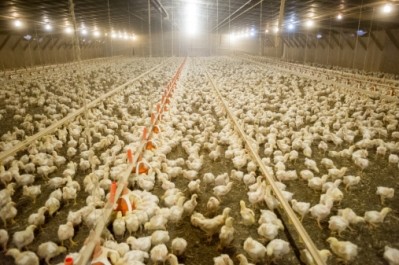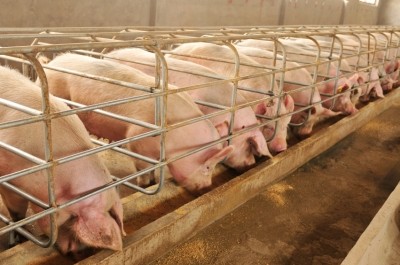Fermented feed: will pig producers buy into it?

The concept of fermented feed is not a new one - for several decades it has been touted as an approach for improving feed efficiency and lowering feed costs. However, the current focus on antibiotics reduction and sustainability has re-ignited interest in the practice, according to Dutch feed company ForFarmers.
Bram van den Oever, pig nutritionist at ForFarmers, told FeedNavigator that historically, its adoption by farmers has been thwarted by problems with inconsistent feed quality.
“One of the failures people using alternative approaches made was that they did back-slopping, in which they carried out the fermentation process, but then afterwards took out part of the product and added new ingredients, then continued the fermentation process,” he explained.
He said that the problem with this unhygienic practice was that it caused build-up of bad bacteria and unwanted by-products that compromised the efficiency of the desired fermentation.
3-5% feed efficiency improvement
Over the last ten years, ForFarmers has refined and developed its fermentation concept to ensure a reliable process with consistent feed quality. The firm has now reached the point where it can claim a feed efficiency improvement of 3-5% and lower feed costs, running up to some €10 per finished pig place per year.
Explaining how this feed efficiency improvement comes about, van den Oever said: “the process produces lactic acid, which is beneficial for pig gut health. It destroys bacteria such as E. coli and salmonella, so pigs need fewer antibiotics.
“Furthermore, because fermentation simulates the conditions in the stomach (low pH and a temperature of 37ºC), it is effectively ‘pre-digesting’ the feed. This results in increased digestibility of the phosphate and nitrogen components, so the amount of phosphate and protein can be reduced,” he explained.
In ForFarmers’ fermentation concept, two tanks are utilized - one for fermentation and the other for storage - thus avoiding back-slopping. The fermentation tank is filled with water with a temperature of 65ºC and the dry component (cereal, protein or fiber) is added to remove any germs present in the ingredients prior to cooling it down to 37ºC, when the liquid culture is added to activate fermentation. The process takes 18-20 hours from start to finish.
Liquid culture key to success
There are a number of factors that make ForFarmers’ current generation fermented feed technology more effective than its predecessors and rivals, according to van den Oever.
Firstly, ForFarmers has switched to a liquid culture, which produces lactic acid faster and yields a faster decrease in pH than a dry culture because the culture is already activated
“It is important that the strain is one that produces lactic acid very quickly and yields mainly lactic acid rather than starting production of unwanted components such as acetic acid and CO2. The faster pH is reduced as a result of lactic acid production, the less time there is for other bacteria or yeasts to produce unwanted by-products,” said van den Oever.
In addition, the company only ferments dry components, for example, wheat bran, soy meal or sunflower meal, rather than the whole feed. The reason for this is that if the amino acids are fermented, they will be transferred to biogenic amines which will result in lower feed quality.
DIY or buy pre-fermented?
Pig producers can invest in the fermentation equipment and produce their own feed, or buy the fermented feed from ForFarmers.
van den Oever said that pig producers with their own heat source, such as a wood chip oven or biomass boiler, would see the quickest return on investment - typically between one and three years. Those sites without a heat source would realistically be looking at a payback period of three to five years, he estimated.
So far, ForFarmers’ technology is being deployed in Holland, Belgium and Germany, producing approximately 5,000 tons of fermented feed per week, and its potential in the UK market is being explored. 2.5 million pigs have been raised with fermented feed from ForFarmers. Although the market is still in its infancy, van den Oever believes the scope for growth is significant.
“Every farmer with a liquid feeding system can apply fermented feed. The potential is massive,” he said.








